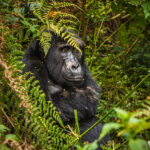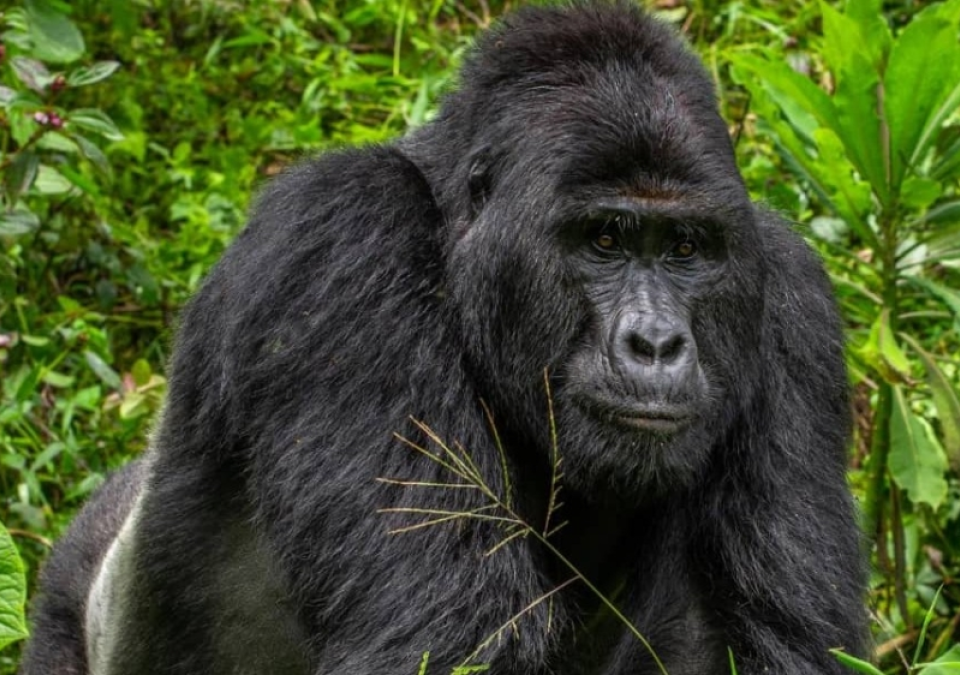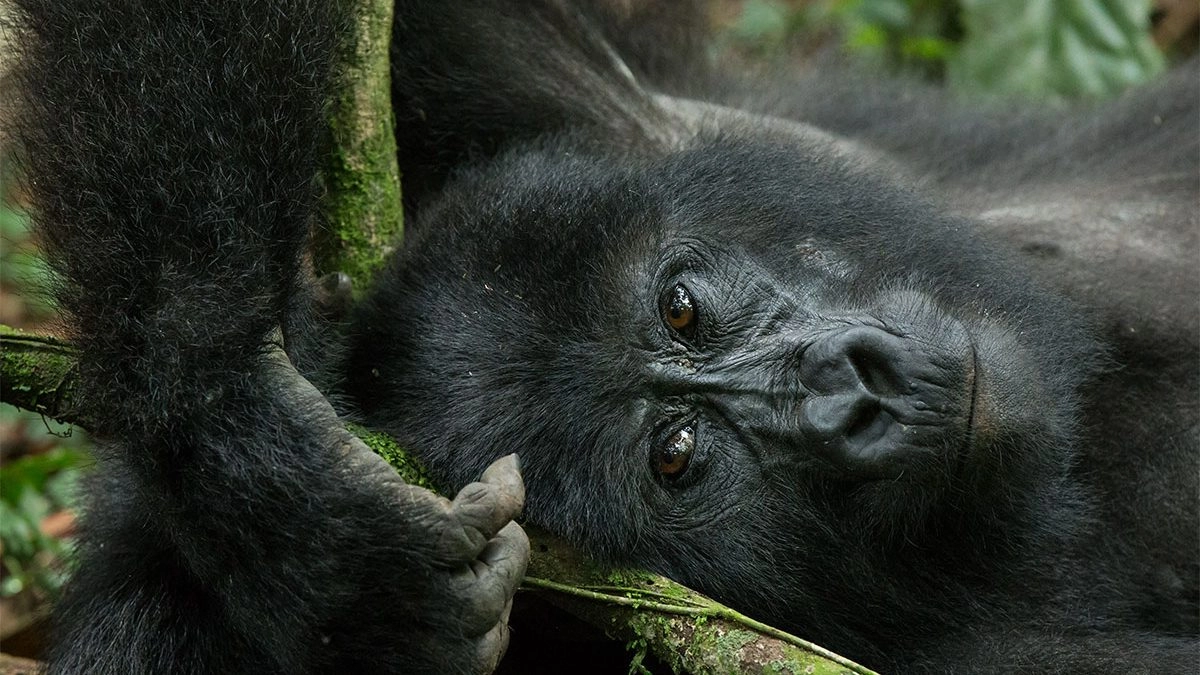
Uganda Gorilla Trekking from Vietnam
August 25, 2025Uganda Gorilla Trekking from USA Through Kigali Rwanda
August 25, 2025Uganda Gorilla Trekking from Vietnam Through Kigali Rwanda
Embarking on Uganda Gorilla Trekking from Vietnam through Kigali, Rwanda is a transformative journey that blends adventure, wildlife discovery, and cultural immersion. For travelers seeking the ultimate African safari, Uganda’s Bwindi Impenetrable National Park and Mgahinga Gorilla National Park offer the rare opportunity to encounter mountain gorillas in their pristine natural habitats. Many visitors ask, “Is it possible to experience gorilla trekking efficiently while minimizing travel time?” Flying via Kigali provides a practical, time-saving route that also offers a scenic introduction to East Africa’s stunning landscapes.
This journey is more than just wildlife observation. Trekking through dense rainforest, travelers witness the interplay of nature, rare bird species, and the remarkable social behavior of habituated gorilla families. The experience also includes cultural engagement with local communities, including the Batwa people, and exposure to Uganda’s rich heritage. Partnering with an experienced operator like Ovacado Adventures ensures seamless arrangements for permits, transport, and accommodations. By planning carefully, visitors enjoy unforgettable encounters during Uganda Gorilla Safaris, spending one hour observing and photographing gorillas while learning about conservation efforts that protect these endangered primates.
Step 1: Booking Your International Flight from Vietnam
The first step for any traveler from Vietnam is securing a flight to Kigali International Airport (KGL). Major Vietnamese cities such as Ho Chi Minh City and Hanoi have connecting flights to Kigali via hubs including Doha, Istanbul, and Addis Ababa. Total travel time generally ranges from 14 to 20 hours depending on layovers. When planning, allow extra time for acclimatization to the region, which helps prepare for trekking in Uganda’s high-altitude forests.
Direct flights to Kigali are limited, so most travelers must plan connections carefully. Opting for flexible tickets can accommodate unforeseen delays or allow time for pre- or post-trekking experiences in Rwanda. Flying via Kigali not only shortens the journey to Uganda but also offers a chance to explore Rwanda’s vibrant culture, scenic landscapes, and historical sites, including the Kigali Genocide Memorial and local artisan markets. For American and Asian travelers, this route provides an efficient, comfortable, and cost-effective alternative to flying directly into Entebbe, Uganda.
Step 2: Arranging Transport from Kigali to Uganda
Once in Kigali, travelers must arrange a transfer to Uganda’s gorilla parks. This journey passes through Rwanda’s rolling hills and crosses into Uganda via the Katuna or Cyanika border posts. The drive through Uganda’s Kigezi highlands is scenic, featuring lush farmlands, terraced hills, and stunning viewpoints that showcase the natural beauty of southwestern Uganda.
Professional tour operators handle all logistics, including customs and immigration at the border, allowing visitors to focus on the experience rather than paperwork. Travel time from Kigali to Bwindi typically ranges from four to five hours, while reaching Mgahinga Gorilla National Park takes slightly less time. Combining comfort and efficiency, this route is ideal for travelers seeking short treks or multi-day safaris without the extended drive from Uganda’s Entebbe airport. Along the way, travelers can explore roadside villages, engage with local communities, or stop at coffee plantations, making the journey an immersive cultural and scenic experience in its own right.
Step 3: Securing Your Gorilla Permit
A gorilla permit is essential for trekking in Uganda. Permits grant access to one hour with a habituated gorilla family under ranger supervision. Uganda’s permits are priced at approximately USD 800 for foreign non-residents, making them more affordable than Rwanda’s USD 1,500 permits. This cost contributes directly to gorilla conservation and community development around the national parks.
Permits must be booked well in advance, especially during peak seasons (June to September and December to February) when demand is high. Tour operators typically handle this process, ensuring confirmation and guaranteeing access to specific gorilla families. Each permit is assigned to a designated group, maintaining small visitor numbers for safety and minimizing environmental impact. Securing a permit early allows travelers to select preferred trekking sectors such as Rushaga, Nkuringo, or Buhoma, optimizing the experience and creating an intimate connection with Uganda’s iconic mountain gorillas.
Step 4: Preparing for the Gorilla Trek
Preparation is critical for a successful trek. Trekkers should arrive in good physical condition, as trails can be steep, muddy, and challenging at high altitudes. Essential gear includes sturdy hiking boots, rain jackets, long-sleeved clothing, gloves, a hat, and insect repellent. Water, snacks, and a camera with a protective cover are also recommended.
On the morning of the trek, guides provide a briefing covering park regulation, gorilla behavior, and safety protocols. Understanding these rules ensures a respectful and safe encounter for both humans and wildlife. Hikes typically last between one and six hours depending on the gorillas’ locations. Once located, trekkers spend one hour observing, photographing, and enjoying the gorillas’ natural interactions. Rangers provide educational insights about group dynamics, conservation efforts, and forest ecology, making the trek both exciting and informative.
Step 5: The Gorilla Trekking Experience
The highlight of any Uganda Gorilla Safari is the trek itself. Travelers hike through dense rainforest, listening to the sounds of birds, monkeys, and rustling leaves as they follow their guide. The anticipation builds as rangers lead the group closer to gorilla families, and moments of eye contact with a silverback or playful juveniles create unforgettable memories.
Treks combine physical activity with wildlife observation. Guides explain each gorilla’s role within the family, demonstrating the species’ intelligence, communication, and social bonds. Photography enthusiasts can capture intimate wildlife moments, though strict regulations protect the gorillas. During the hour spent observing the group, trekkers often see feeding, play, and social grooming behaviors. This experience emphasizes the importance of responsible tourism and contributes to conservation funding that ensures these primates thrive for future generations.
Step 6: Accommodation Options Near Gorilla Parks
Accommodation near Bwindi and Mgahinga offers diverse options for all budgets. Luxury lodges provide private cottages, panoramic views of the Virunga Mountains, and fine dining experiences. Mid-range lodges feature comfortable rooms, local cuisine, and organized guided walks, while budget lodges provide simpler accommodations for travelers prioritizing cost-efficiency.
Many lodges offer cultural programs that enrich the safari experience. Visitors can participate in Batwa village tours, learn traditional crafts such as weaving and pottery, or enjoy local music and dance performances. Sampling regional dishes like matoke, cassava, and fresh tilapia gives guests a taste of Ugandan culture. Staying close to the park ensures early morning departures, maximizing time for trekking and enhancing the overall safari experience. Choosing the right lodge balances comfort, cultural immersion, and wildlife access for a memorable adventure.
Step 7: Cultural Experiences Around Bwindi and Mgahinga
Uganda’s southwestern region provides more than wildlife; it offers rich cultural interactions. Engaging with Batwa communities allows travelers to learn about forest-dwelling traditions, ancient survival skills, and vibrant cultural heritage. Guided village tours demonstrate traditional music, dance, and craft techniques, giving visitors insight into the historical relationship between humans and forest ecosystems.
Beyond villages, travelers can visit local coffee plantations to learn about cultivation and sampling processes. Markets, craft centers, and local schools also offer authentic encounters. These experiences complement the gorilla trek, creating a balanced itinerary that combines wildlife adventure with cultural education. By participating in local activities, travelers contribute to community development while enhancing their understanding of Uganda’s heritage. Such cultural immersion ensures a well-rounded, unforgettable safari that blends nature, history, and human connection.
Step 8: Additional Wildlife and Safari Activities
Uganda offers more than gorilla trekking. Chimpanzee tracking in Kibale Forest National Park, wildlife game drives in Queen Elizabeth National Park, and bird watching throughout the country add variety to your safari. These activities provide opportunities to observe lions, elephants, hippos, and over 1,000 bird species.
Combining gorilla trekking with other wildlife adventures creates a holistic safari holiday. Travelers can design multi-day itineraries that include forest hikes, savanna safaris, and cultural visits. Tour operators facilitate these experiences, ensuring smooth logistics, expert guidance, and conservation-focused travel. By integrating diverse wildlife encounters, visitors gain a comprehensive understanding of Uganda’s rich biodiversity, reinforcing the country’s reputation as a top destination for responsible tourism and Uganda Wildlife Safaris.
Planning Costs and Logistics
A typical Uganda Gorilla Trekking from Vietnam through Kigali includes gorilla permits, accommodation, transport, meals, and tips. Gorilla permits represent the largest single expense at around USD 800 per person. Lodging and guided tours are the next major cost, followed by flights, visas, and travel insurance. Multi-day tours offer a more relaxed pace, allowing additional wildlife and cultural experiences.
Flights from Vietnam range widely, depending on airline and season, typically between USD 800 and 2,200. Tour operators can coordinate transport from Kigali to Uganda, border crossings, and accommodation. Travelers should also budget for meals, gratuities, souvenirs, and optional activities. Careful planning ensures no surprises, allowing travelers to focus on the experience, wildlife, and cultural encounters rather than logistics.
Best Time to Visit Uganda
The dry seasons—June to September and December to February—are ideal for trekking. Trails are more accessible, gorilla encounters are more predictable, and photography conditions are optimal. During rainy months (April, May, October, November), fewer tourists visit, creating a more intimate experience, although trails may be slippery and challenging.
Choosing the right season affects safety, comfort, and the overall enjoyment of your Uganda Gorilla Safari Holiday. Dry-season visits allow for early morning treks with minimal disruptions, while cultural visits and secondary wildlife excursions are easier to coordinate. Planning around these periods ensures optimal wildlife observation and immersive safari experiences.
Why Choose the Kigali Route
Flying through Kigali provides significant advantages. It reduces travel time, offers scenic drives, and allows for cultural exploration in Rwanda. Combining Rwanda and Uganda provides a diverse experience, including Gorilla trekking, golden monkey tracking, and visits to historical and cultural sites. Uganda permits are generally less expensive, making the trip cost-effective.
For travelers from Vietnam, this route offers a manageable and enriching itinerary. Kigali serves as a gateway to East Africa, balancing efficiency with adventure. Travelers can enjoy the convenience of organized tours, scenic drives, cultural stops, and high-quality lodging while minimizing fatigue.
Your Ultimate Uganda Gorilla Safari
Uganda Gorilla Trekking from Vietnam through Kigali, Rwanda is a once-in-a-lifetime adventure combining wildlife, culture, and breathtaking landscapes. Trekking mountain gorillas, engaging with local communities, and exploring Uganda’s highlands create memories that last a lifetime. Partnering with Ovacado Adventures ensures a seamless experience, from permits to lodging and guided tours.
Visitors witness intimate gorilla behaviors, hike through dense rainforest, and explore local cultures. Multi-day itineraries allow for a more relaxed experience, including chimpanzee tracking, game drives, and cultural immersion. Combining adventure with responsible tourism supports conservation efforts, empowering local communities while providing visitors with a meaningful safari. For travelers seeking an unforgettable African adventure, this route offers efficiency, accessibility, and immersive experiences, creating a journey that exceeds expectations in every way.




